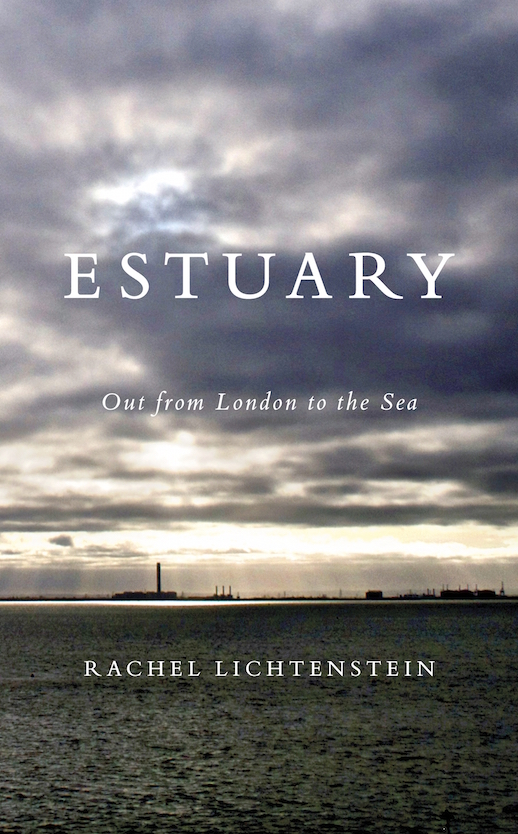 Estuary: Out From London To The Sea by Rachel Lichtenstein
Estuary: Out From London To The Sea by Rachel Lichtenstein
(Hamish Hamilton, hardback, 336 pages. Available here in the Caught by the River shop.)
Review by Peter Watts
The hazardous mystery of the Thames Estuary has attracted writers for centuries, acting as both treacherous landscape for deadly adventures and ready-made metaphor for the voyage of life. In Estuary, Rachel Lichtenstein attempts to make sense of this unsettling environment following a seemingly gentle sailing trip from Wapping to Southend in the cultured company of artists and archeologists that ends Conrad-style, on storm-tossed seas, with Lichtenstein cowering in the bowels of the boat assailed by ghostly screams – “the clamour of a great crowd of people crying out simultaneously in fear”. After fun times like these, who wouldn’t want to go back for more?
As often with Lichtenstein, there is personal history here. Her books are invariably wedded in a combination of autobiography and place, as she uses her own relationship with an area as bait, drawing her into a deeper excavation. Lichtenstein is a child of the estuary, with connections both to the Essex coast and the East London docks, but despite this – and the constant use of the first person – Estuary is overwhelmingly a book about other people: those who live and work around the river. It’s also overwhelmingly a book about water. Lichtenstein spends time ashore in coastal towns, gargantuan cargo ports and on perilous mudflats, but she spends much more of it on boats, talking to the sailors who understand the submerged jeopardies of the estuary – the wrecks, tides, currents and sandbanks – better than anybody. Following her Southend nightmare and after another, potentially fatal, misadventure aboard a yacht, it’s clear that Lichtenstein is profoundly fearful of the unforgiving, unpredictable environment in which she has placed herself, and forced to confront mortality, taken outside her comfort zone and almost entirely reliant on the expertise of others, she produces possibly her finest book.
The multifaceted dangers of the estuary are repeatedly scrutinised, from the unexploded bombs aboard sunken Second World War boat SS Richard Montgomery to the sudden changes in weather than can turn a tranquil outing into a race against death. One of the most affecting chapters is when she interviews the wife of a drowned fisherman, driving home the almost existential nature of the working terrain. Overall, this is a masculine world, but Lichtenstein appears entirely comfortable within it – or more likely is skilled enough a listener to make the sailors comfortable with her.
Lichtenstein spends time on ferries, fishing vessels, cockling boats and sailing yachts, as well as on Second World War sea forts, such as the sort-of romantic but actually quite seedy micronation of Sealand. When not talking to seafaring strangers, she meets more familiar artists and writers who are equally drawn to this landscape, including Ken Warpole and Iain Sinclair. As she hops from coast to coast, seafort to sea port, getting trapped on sandbacks and almost thrown off yachts, exploring places with names such as Dead Man’s Island, Doggerland and Foulness, it becomes almost impossible to work out exactly where she is at any given point. All becomes one, time and place merging with the geography of the estuary to form a disorienting confusion of sea, mud, life and death, united by a salty sense of danger, loss and adventure.
*
Up In Smoke: The Failed Dreams of Battersea Power Station by Peter Watts is out now. Read Alister Wedderburn’s review here.